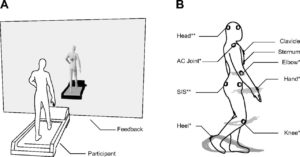Virtual reality and treadmill training could help prevent falls in older adults

 In this trial, researchers analysed data from 282 participants from five clinical sites in Belgium, Israel, Italy, the Netherlands, and the UK between 2013 and 2015. All participants were aged 60-90, were able to walk at least 5 minutes unassisted, on stable medication, and had reported at least 2 falls in the 6 months before the start of the study. Nearly half of all participants (130) had Parkinson's disease, and some (43) had mild cognitive impairment.
In this trial, researchers analysed data from 282 participants from five clinical sites in Belgium, Israel, Italy, the Netherlands, and the UK between 2013 and 2015. All participants were aged 60-90, were able to walk at least 5 minutes unassisted, on stable medication, and had reported at least 2 falls in the 6 months before the start of the study. Nearly half of all participants (130) had Parkinson's disease, and some (43) had mild cognitive impairment.
Participants were assigned to treadmill training with virtual reality (146), or treadmill training alone (136). The virtual reality component consisted of a camera that captured the movement of participants' feet and projected it onto a screen in front of the treadmill, so that participants could 'see' their feet walking on the screen in real time. The game-like simulation was designed to reduce the risk of falls in older adults by including real life challenges such as avoiding and stepping over obstacles like puddles or hurdles, and navigating pathways.
During the six months after training, the incidence rate of falls decreased in both groups, but the decrease was only statistically significant (i.e. better than chance) in the treadmill plus virtual reality group (11.9 to 6.0 falls in the virtual reality group -- a 42% reduction; compared to a decrease from 10.7 to 8.3 in the treadmill only group).
"Falls in older people often occur because of tripping and poor obstacle negotiation while walking. Falls often start a vicious cycle, which has many important negative health consequences.
The biggest improvement was seen in participants with Parkinson's disease, and the authors suggest that this could be due to a number of factors, including that they had higher rates of falls at the start of the study, or that virtual reality was able to help improve cognitive and motor skills which are affected in Parkinson's disease. However, although these are interesting findings, the authors warn that the study was not powered to measure differences in between sub-groups, so further research is needed to verify these explanations.
See the full story here: https://www.sciencedaily.com/releases/2016/08/160811190753.htm
Pages
- About Philip Lelyveld
- Mark and Addie Lelyveld Biographies
- Presentations and articles
- Tufts Alumni Bio